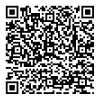1.8 VOS - The view on society – sustainability and mining
by Anna S. Hüncke
Last updated: 2025/08/28
This learning unit introduced the interdependence of mining industry, society and environment which will be detailed out for particular topics in the following chapters. Mining does not operate in isolation. In addition to consumers and other sectors of industry, mining has an impact on a global scale (think of CO2 emissions) as well as on the immediate environment and neighbouring communities where mining takes place. Mining activities characterise the landscape for many years, even after the closure of a mining site. Meanwhile corporate responsibility in the mining sector has gained more and more public interest, not least due to the increasing scarcity of raw materials.
As different and diverse as the mining sector is, the responsibilities attributed to the sector are likely to be just as different and diverse. Here the perspectives of the different stakeholder groups can play a key role. However, also the political requirements for sustainable (and global) development point to the broad and complex spectrum of responsible mining.
Learning objectives
Learning objectives
After working through this learning unit, you should be able to
- name and explain different concepts of sustainability
- describe and explain the different steps that led to sustainable development
- explain the relevance of environmental, social and corporate governance (ESG) especially for mining
- recognise and reflect on the importance of mining in the context of socio-ecological transformation.
Outline
This learning unit begins by elaborating on the notion of sustainability and corresponding models, like the 3 pillars model that was already introduced in the previous learning unit. Other models include the three nested dependency model, weak and strong sustainability. Furthermore recent concepts like circular economy and doughnut economy are introduced. Then the concept of sustainable development and its predecessors is explained. the relevance of environmental, social and corporate governance (ESG) especially for mining is discussed. Finally, approaches of the mining industry with regard to the socio-ecological transformation are exemplified.

Further reading:
Sieger, Johannes / Lottermoser, Bernd G. (2024).
Chapter 3: Sustainable development and mining.
In Lottermoser, Bernd G. / Sieger, Johannes /Tost, Michael (Ed.),
Mixed Reality Handbooks for Mining Engineers – Volume 1. Part I – Sustainability in Mining. Part II – Mine Planning. (pp. 30-106). Leykam.
Bernd G. Lottermoser /
Matthias Schmidt (Ed.)
with contributions of
Anna S. Hüncke, Nina Küpper and Sören E. Schuster
Publisher: UVG-Verlag
Year of first publication: 2024 (Work In Progress)
ISBN: 978-3-948709-26-6
Licence: Ethics in Mining Copyright © 2024 by Bernd G. Lottermoser/Matthias Schmidt is licensed under Attribution-ShareAlike 4.0 International Deed, except where otherwise noted.


Further Informationen:
Project "Ethics in Mining"